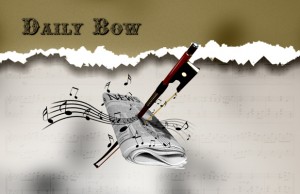 The idea of creativity is a highly subjective one–it seems to fall into the same nebulous and airy category as musicality, intuition, and charisma. Defining creativity, musicality, and their emotional cousins can seem impossible and even futile, bringing to mind the famous Martin Mull quote: “Writing about music is like dancing about architecture.” In keeping with the architectural theme, while some may contend that revealing the metal framework behind a beautiful facade undermines its beauty, others find the real science of what holds a building together part of the fun and fascination. The same can be said about creativity: the beauty of creativity is not only in its product but in its process. It is this very phenomenon–the one of both product and process–that author Jonah Lehrer explores in his latest book, “Imagine: How Creativity Works.”
The idea of creativity is a highly subjective one–it seems to fall into the same nebulous and airy category as musicality, intuition, and charisma. Defining creativity, musicality, and their emotional cousins can seem impossible and even futile, bringing to mind the famous Martin Mull quote: “Writing about music is like dancing about architecture.” In keeping with the architectural theme, while some may contend that revealing the metal framework behind a beautiful facade undermines its beauty, others find the real science of what holds a building together part of the fun and fascination. The same can be said about creativity: the beauty of creativity is not only in its product but in its process. It is this very phenomenon–the one of both product and process–that author Jonah Lehrer explores in his latest book, “Imagine: How Creativity Works.”
Lehrer, author of the bestseller “How We Decide,” is no stranger to the world of cognitive processes, and his latest project throws open the windows of the mind, shedding light on what defines, shapes, and, well, creates creativity. The mystery of the creative process is in great part responsible for its mystique. The creative spark can strike at any time, opportune or otherwise, and, like a cat, it comes and goes at its own discretion. Or does it? Lehrer’s book, which weaves together anecdotes of great artists (including Bob Dylan, Yo-Yo Ma, Pixar animators, an amateur bartender in New York City, and Israeli army reservists…to name a few) with expository scientific text, stresses the value of paying attention to internal mental processes that seem unrelated to the task at hand, and he also discusses the varying degrees of creative focus that certain tasks demand. As any writer or artist knows, sometimes the harder one tries to squeeze out a creative idea, the more recalcitrant the creative streak becomes–and sometimes just the opposite is true. At other times, though, it is crucial to focus one’s creativity and harness it to accomplish very specific goals. Wesleyan University president Michael S. Roth, in his review of Lehrer’s book for The Washington Post explains further:
Lehrer explains some of the neuroscience behind these different modes of attentiveness. Making use of the power of the right hemisphere figures in, as does activating more energy from the prefrontal cortex to “direct the spotlight of attention.” He discusses experiments that explore which parts of the brain seem most active in different kinds of pursuits. For example, as the brain develops in childhood, the power to inhibit our flights of fancy grows. But as inhibition and focus increase, the capacity to improvise seems to diminish.
While Lehrer offers plenty of scientific dissections of creativity and how it boils down to electrical signals in the brain, much of the book is dedicated to discussing the individual and contextual concepts of creativity. While the early portions of the book deal with individuals and anecdotes about their creative processes together with scientific anecdotes, the final three chapters of the book are devoted to a discussion of creativity in a cultural context, offering insights on why cities are creative hotspots and why teams that “are a mixture of the familiar and the unexpected,” such as those at Pixar, are the most innovative. In Roth’s words, “Too much strangeness, and things fall apart. Too much closeness, and the generative spark is never struck.” Lehrer puts it this way: “The only way to maximize creativity . . . is to encourage a candid discussion of mistakes. . . . We can only get it right when we talk about what we got wrong.” Pixar director Lee Unkrich put it most nakedly of all: “We just want to screw up as quickly as possible. We want to fail fast. And then we want to fix it. Together.”
Creativity, under Lehrer’s lense, turns out to be a simple name for a complex beast, one that is both individual and highly group-oriented in nature. Lehrer comes at it from all angles and gives the reader a diverse cross-section of a process that is close to many musician’s hearts, making it a useful expository tool for anyone looking to provoke greater creativity–and thereby a greater understanding of themselves–through their art. Roth sums it up in his review:
“Imagine” doesn’t offer a prescription for how we are to become more imaginative, but it does emphasize some key ingredients of a creative culture: taking education seriously, increasing possibilities for human mixing and cultivating a willingness to take risks. Lehrer practices what he preaches, showing an appetite for learning, a determined effort to cross fields and disciplines, and a delight in exploring new possibilities. Reading his book exercises the imagination; the rest is up to us.
With no blueprint for what this means for the classical musician, Roth is right: creativity, and what we make of it, is really all up to each of us.














No comments yet.